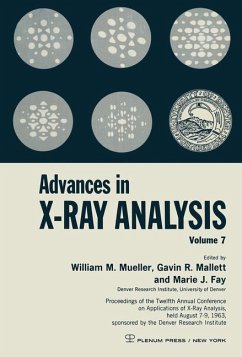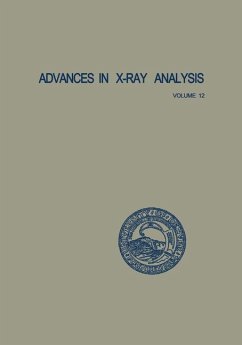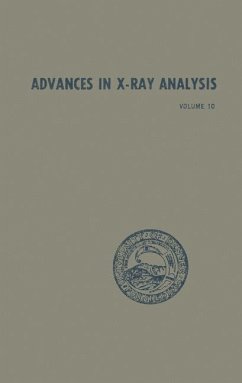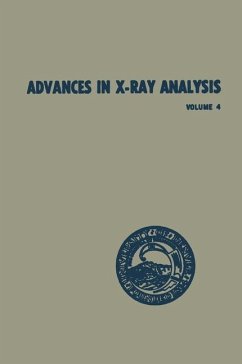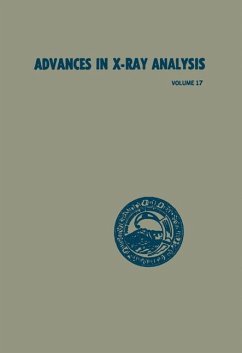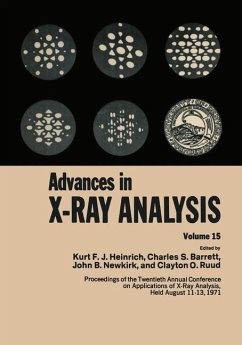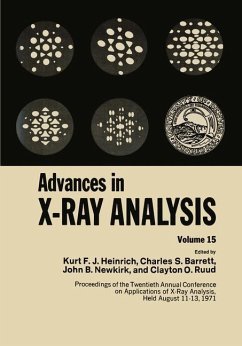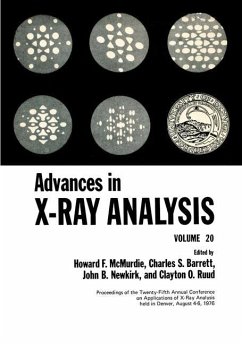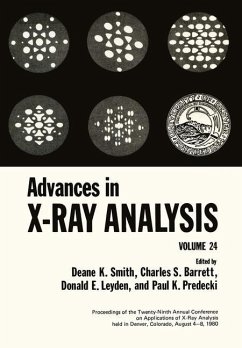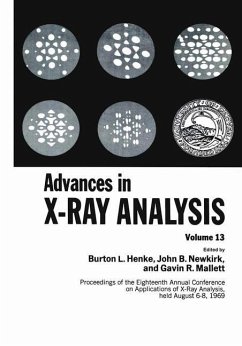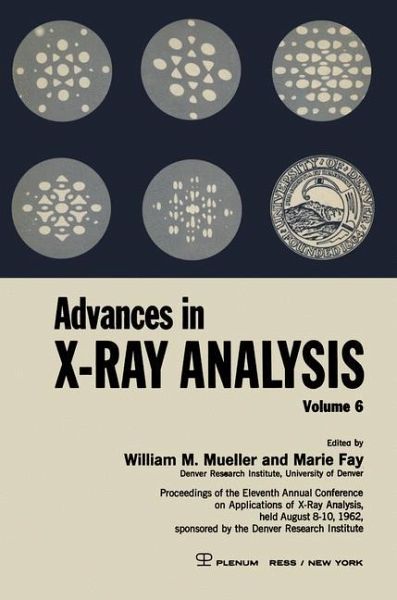
Advances in X-Ray Analysis
Proceedings of the Eleventh Annual Conference on Application of X-Ray Analysis Held August 8-10, 1962
Versandkostenfrei!
Versandfertig in 6-10 Tagen
38,99 €
inkl. MwSt.

PAYBACK Punkte
19 °P sammeln!
The torrential flow of technical information appearing in the world sources of literature is creating concern and apprehension among scientific people at all levels. It is extremely difficult to keep abreast of information flowing into a specific field. It is nearly impossible to transcend traditional confines of individual disciplines and put to effective use all pertinent information which stems from continuously increased trans disciplinary research. At the same time the researcher is faced with problems of in creasing complexity, with the requirement for new knowledge and new techniques, a...
The torrential flow of technical information appearing in the world sources of literature is creating concern and apprehension among scientific people at all levels. It is extremely difficult to keep abreast of information flowing into a specific field. It is nearly impossible to transcend traditional confines of individual disciplines and put to effective use all pertinent information which stems from continuously increased trans disciplinary research. At the same time the researcher is faced with problems of in creasing complexity, with the requirement for new knowledge and new techniques, and must frequently, with little time, bridge the gap between his own sphere of experience and a sometimes apparently unrelated new interest. This is readily observed with X-ray analysis, where the chemist, physicist, metallurgist, and engineer are each faced with the solution of problems peculiar to specific disciplines but where solutions frequently correlate with the particular needs of the others. The Annual Conference on Applications of X-Ray Analysis and the subsequent Advances in X-Ray Analysis contribute to better understanding of multidisciplinary accomplishments; they are a ready source of information for the researcher who must undertake an abrupt change in emphasis for new objectives. The scope of this conference is broad--concerning itself, as it does, with latest developments in high-temperature and cryogenic techniques, phase equilibria, crystal structures, polymers, microprobes, and new developments in instrumentation.





